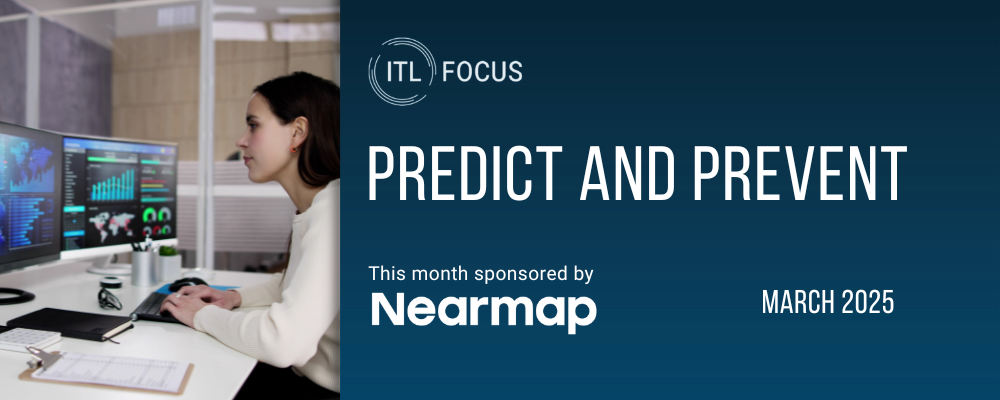KEY TAKEAWAYS:
--Digital twins are already letting auto insurers use telematics to model the behavior of drivers, assess risk and provide feedback on how they can improve their performance.
--Soon, digital twins will allow us to increase the inspection rate of commercial properties from 10% to 100%. Digital twins will let us monitor real-time data from IoT sensors in insured assets such as homes or vehicles and identify potential risks or issues before they occur, allowing insurers to mitigate them.
--The possibilities are endless. And the race begins in earnest now because digital twins will dominate the insurance lifecycle by 2035.
----------
As the world becomes increasingly digitized, the insurance industry must take advantage of the rapid advances in the availability of IoT data, sophisticated analytics and generative AI. One technology in particular, digital twins, holds immense transformational promise.
Digital twins are virtual representations of physical assets, systems and processes that are used to monitor and analyze performance in real time.
The digital twin concept is widely adopted in manufacturing and supply chain – and is expected to gain broad adoption in the insurance industry within the decade. Insurers that integrate this technology will significantly out-compete in the evolving insurance landscape.
The use of such real-time data and analysis is expected to help insurers create a more precise and current understanding of risk. AI and machine learning models will be applied to these digital twins to produce highly accurate predictive and prescriptive analytics.
This is not some distant future vision. The insurance industry has long relied on data, with vast amounts of information being gathered throughout the rating, underwriting and claims processes. Digital twins are now capable of leveraging that data in specific insurance applications. Automobile telematics is a familiar example. Here, digital twins enable insurers to assess the risk of drivers and provide feedback to the drivers on how to improve performance.
Some may think that digital representations are inferior to their real-world counterparts. There are many examples to prove that this is not the case. The P&C insurance industry has long used parametric securitization as efficient and rapid access to post-catastrophe capital. In these structures, the real-world insurance losses are secondary to the modeled parametric loss that actually triggers the bond payment.
Another example of digital twins is Swiss Re’s collaboration with Microsoft to establish its novel Digital Market Center that focuses on integrating connected vehicles, industrial manufacturing and natural catastrophe data. While insurers can find immediate value in initiatives such as these, we are only beginning to scratch the surface.
In the near future, digital twins will be applied across the entire insurance life cycle providing real-time data and insights into customers’ insured assets – including data reported by IoT and smart sensors from their vehicles, property structures and businesses.
For example, in underwriting, if we expand the definition of “inspection” to include digital twins, we can rapidly increase the inspection rate of commercial properties from 10% to 100%. While it may seem daunting to digitize so much of the world, generative AI can be used to produce up to 85% of digital twin content.
See also: Good, Bad and Ugly of Going Digital
In risk management, their application could look like Allianz’s use of predictive maintenance for wind turbines. Predictive maintenance involves the use of cloud-connected smart sensors on the turbines being fed into analytical models and monitored by AI. Analyzing past performance and known characteristics can identify patterns and anticipate and allow for maintenance to be carried out before a breakdown occurs.
More broadly applied, digital twins could be used to monitor and analyze real-time data from IoT sensors in insured assets such as homes or vehicles and identify potential risks or issues before they occur, allowing insurers to mitigate them. Digital twins could also be applied in monitoring the cyber risk environment and informing a customer’s cybersecurity organization of new potential viruses, attack vectors and risks.
The possibilities are endless. And the race begins in earnest now. It is reasonable to expect that digital twins will come to dominate the insurance lifecycle by 2035.
How can you prepare and help drive your business toward this future?
For starters, embrace the idea of digital twins. Expect to see the insurance industry drive the adoption of IoT devices, potentially connecting to 25% of all devices by 2035. An insurance company that ingests and discerns insights from that much data looks fundamentally different than today. How do we get that data in the first place? By encouraging IoT connectivity via new policies, greater limits and preferential renewal terms.
See also: Digital Future of Insurance Emerges
Recognize that virtual digital technology has the capability to manage physical environments. Digital twins will regularly intervene in the physical world to mitigate risks and drive preferred outcomes. So, build this potential into your vision for customers.
One very promising application is that as digital twins become sufficiently realistic, this will increasingly allow for remote operation of dangerous machinery or in dangerous conditions, dramatically reducing accidents in industries like mining and oil extraction.
Understand that digital twin technology will complement insurers’ traditional role of indemnifying policyholders against losses. So, prepare to use digital twins to more robustly assess and actively manage risks associated with insured assets, to monitor performance and to take actions to mitigate those risks.
Digital twin technology holds immense promise.







